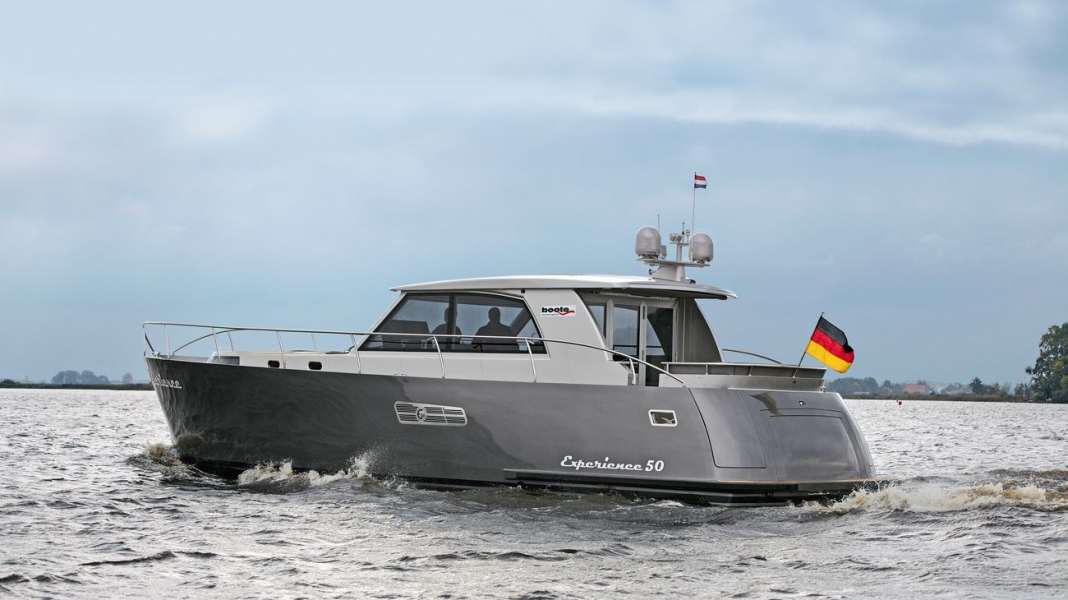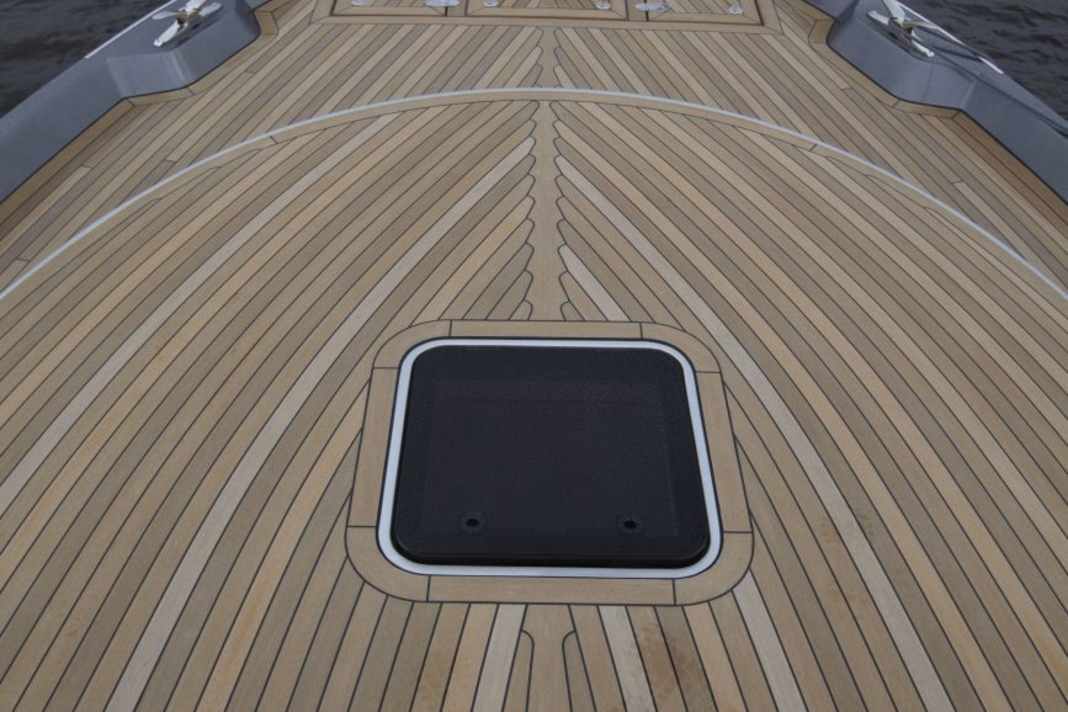
FS Yachting wants to appeal to skippers who love something special, are enthusiastic about both a beautiful ambience and technology and want to have a say right from the start. The latest technology is used, but it is -like an attentive butler - discreetly in the background.
The fact that the crew on boardfeels comfortable and safe, is the top priority - which determines the layout, fittings and furnishings. The driving force is Frank Schröder, whose roots lie in theCommercial shipping and which for 23 years now has been involved in the production ofElectrical and hydraulic systems is successfully employed for the same.
He combined and realised all this experience together with competent partners in a product that bears the telling name "Experience 50 Hybrid": a future-proof boatwith hybrid drive for almost all driving areasThanks to its powerful diesel engines, you can also make fast progress on fast-flowing waterways and, with an electric drive, you canWhisper quiet and can drive along smoothly.






The hull is made of aluminium and the dimensions comply with the 15-metre limit for pleasure craft on inland waterways. The design comes from FS Yachting and was realised under their specifications by Han van Vossen. The first Kasko was designed by Visscher Yachting, who were also responsible for the wooden interior and the metallic paintwork.
The visibleelegant furnishings The interior of the boat was then designed with a great deal of "woman power" by specialists who also design the interiors of large yachts, private aeroplanes and cruise ships. Everything to do with technology was carried out by FS Yachting itself.
The result is a unique boat that you only realise what it contains at second glance. It is noticeable that nothing protrudes in the entire exterior area, that it isNo tripping hazards and you walk over a flat deck. This means that any openings in the hull walls do not detract from the aesthetics. This also applies to the anchor, which is located in the bow behind an invisible mechanism and only appears at the push of a button when it is needed. The fact that the mooring cleats can also be folded out is part of the concept.
On the same level as the cockpit is the light-flooded saloon with a seating area and afantastically equipped pantry. The driving position is a delight with its equipment. The boat becomes an "open" thanks to theelectric sunroof above the forward area of the saloon. Owners and guests occupy the lower floor in separate cabins, each with its own bathroom.
Just one example of many: Throughout the boat, the floor is covered withUnderfloor heating even the lids of the storage compartment floor hatches are not excluded - there are no cold feet. And after showering, theHeated mirrors in the bathrooms.
Behind the residential wing, the machine and generator room is enclosed, followed by the separateTender technical room. To enter theEngine compartment you first have to enter theTender garage. This is possible either from aft, when the stern flap - extended bathing platform - is open, or from the cockpit through the floor hatch.
In the engine compartment, two350 hp V8 diesel engine from VW and two 8 kW electric motors for propulsion. The entire engine compartment is spotlessly clean, clearly laid out and service-orientated. The number and space for the fuel pre-filters and water strainers for the engine cooling water intake have been carefully selected.
They are duplicated, can be separated by means of taps and are attached to the outer wall of the engine compartment in the garage. Everything is top class. Only the water alarm sensors for the fuel pre-filters are missing, but are now on the to-do list.
Without exception, the boat reacts well to every turn of the rudder with an immediate change of course. The attribute "agile" can only approximately describe this behaviour. This is clearly demonstrated by the"Turnmaster", which, thanks to its gyro system, displays the turning behaviour of the boat one-to-one using pointers.
Technical bells and whistles? No: something you get used to very quickly and don't want to do without! Skippers travelling alone can steer the boat using theDocking system using the bow and stern thruster on the jetty so that you can disembark and untie or tie up the lines.
Our sailing area in the Netherlands was only characterised by waves from commercial shipping, which were not very noticeable. Otherwise, the hull shape, which promises to be able to cope with "larger water movements", is obviously trusted.
A rope that could not be completely removed from a propeller and the shaft during the approach to the test is responsible for the fact that we cannot drive and measure the boat at full throttle. According to the shipyard, the maximum speed is 19 knots, and the theoretical range with the diesel engines is 1350 nm at slowest speed to 150 nm at full throttle, plus 15% reserve in each case.
With the 600 Ah Li-ion batteries installed in the test boat, the electric motors allow you to reach a speed of just over 3 knots.more than three hours until the 40% capacity limit is reached, at which point the generator switches on. Conversely, the electric motors charge the batteries during the journey.
Good: At the end of the season, the fully charged batteries can be sent into hibernation without any further action.
In terms of safety, our test boat offers almost everything we require, no experiments are made and the technology is more than mature. No wonder: most of the important equipment comes from commercial shipping.
Conclusion:
Thanks to its drive systems, the 50 Hybrid has a future in all
a future. Customer requirements dominate right from the start, and the workmanship is of the highest standard. Independently operating computers plus an analogue system provide peace of mind, and the tank capacity is sufficient to cover the distance (5 kn about 917 nm and 10 kn about 216 nm plus reserves).

